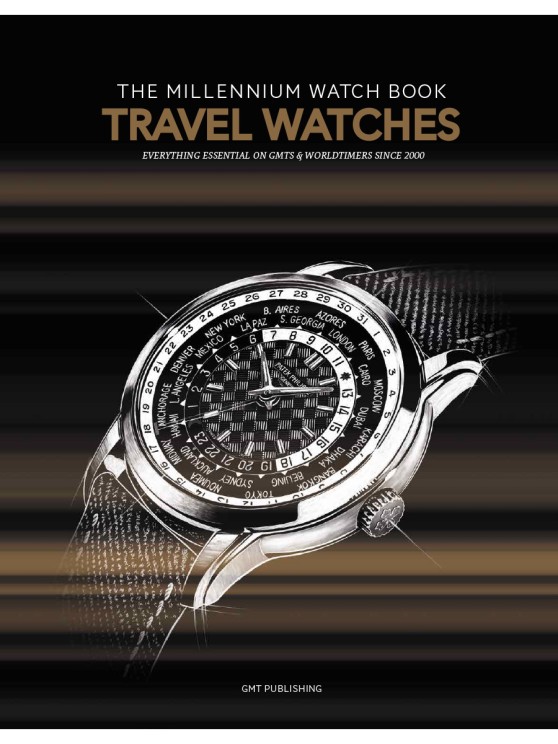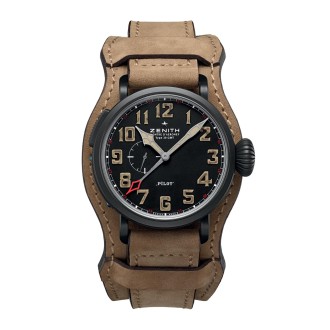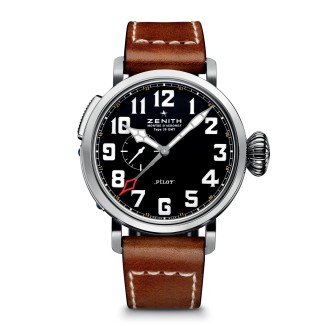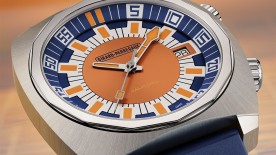While brands are always happy to make use of positive ‘customer testimonials’, some of them carry more weight than others – for instance, when the testimonial in question is from Louis Blériot, who in 1909 became the first man to cross the English Channel by plane. Blériot gave a glowing report of his timepiece: “I am very satisfied with the Zenith watch which I usually use and I cannot recommend it highly enough to people who care about accuracy”.
A pioneering role
This brief review illustrates the significance of aviation for Zenith; alongside Breitling and Dodane, the company was one of the first to manufacture cockpit instruments for civilian and military aircraft. Zenith’s Type 20 made its first appearance in 1938 on the Caudron Simoun C.635, a training plane used by the French Air Force. This choice marked a milestone in technological recognition for the brand: aviation chronometers are subjected to especially demanding conditions including vibrations, changes in temperature and air pressure, magnetic interference from other navigational instruments and so on.
The reliability of Zenith watches is thus tried and tested; when it comes to style, the modern-day Zenith is also broadly inspired by its illustrious ancestor and that’s precisely what stands out at first glance, not least because the Pilot Type 20 GMT’s imposing 48-millimetre diameter makes it hard to miss on the wearer’s wrist.
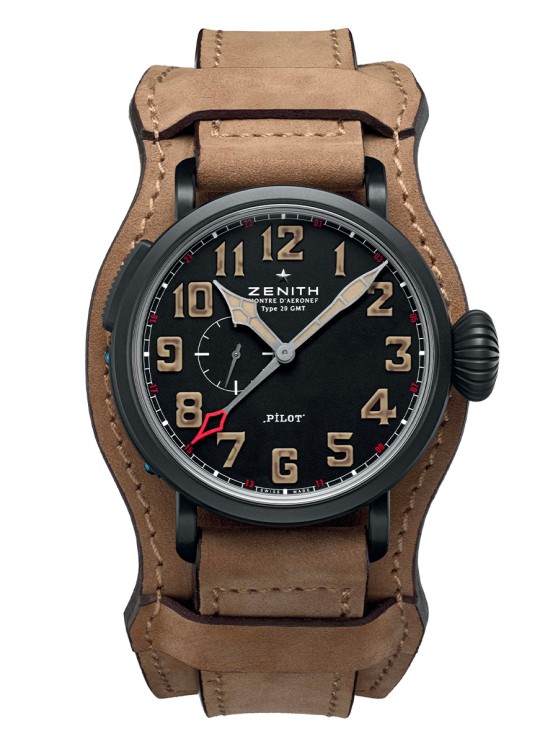
The full-on vintage spirit
That design decision may come as a surprise: such a large diameter bucks current trends and might seem suitable only for linebackers and others of similar size. However, you need to factor in the timepiece’s identity: the choice of diameter in this instance isn’t simply a case of making an impression, it’s all about staying true to the spirit of the era the watch is intended to recall. The key to understanding what’s going on here is to realise that the timepiece is seeking an authentic feel.
The diameter makes sense inasmuch as it harks back to the time when aviation chronometers were worn on top of the pilot’s flight suit on an extra-long strap. The oversize dimensions are a reminder of the fact that the watch was a descendant of the pocket watch and of the need for it to be easy to read in a confined space subject to extensive vibrations. Similarly, the ‘onion’ crown at 3 o’clock echoes the design of crowns in the early 20th century, also directly inspired by pocket watches. The same is true of the broad ‘cathedral’ hands, which take their name from the luminous coating on their central section resembling stained glass windows. A similar style is evident in the extra-large Arabic numerals and the sector dial hour-markers, a characteristic feature of watches between the 1920s and 1940s.
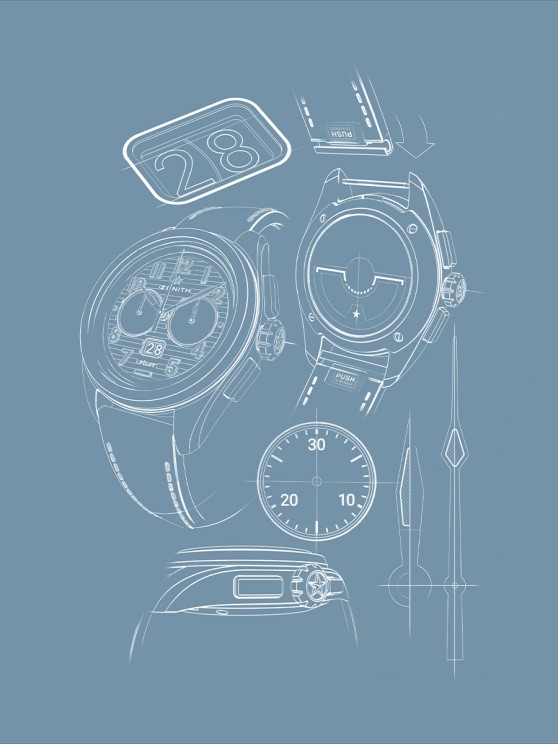
Adding a time zone
The current edition uses the sector dial along with a second hours hand to display the GMT function. The seconds hand is no longer central, instead offset to a secondary display at 9 o’clock. The GMT feature and the small seconds display constitute the two modern adaptations of the timepiece, in addition (obviously) to a new calibre: an automatic Zenith Elite 693 movement with a 50-hour power reserve.
There have been several versions of the Pilot Type 20 GMT, including two introduced in 2013 : a Rolling Stones edition and a Red Baron version named after World War I flying ace Baron Manfred Albrecht von Richthofen (1892-1918). In 2014 a ‘1903’ limited edition was released to commemorate the Wright brothers, followed by another 50-piece limited edition for the US and Canada in 2016.
Amid all these editions, the chronograph and smaller 40-millimetre versions are still the most common. The GMT version is thus relatively rare, all the more so in that the 2013 Pilot line underwent a full redesign ten years later.

A new generation
The 2023 version seeks to strike a balance between the past and present, marking a clear break with the ‘full vintage’ ethos of its 2013 predecessor. The 40-millimetre steel or black ceramic case sports a new design; the oversize crown has also been redesigned to be more angular and contemporary. The most distinctive feature is the black dial with horizontal lines that recall the corrugated metal of early aircraft fuselages. The openworked, blackened oscillating weight brings to mind an artificial horizon – a classic and essential cockpit instrument that displays the orientation of the aircraft relative to the Earth’s horizon. Today’s timepiece comes with a Big Date display in three-hands and chronograph versions – but with no GMT model as yet, making the 2013 Pilot Type 20 GMT just that bit rarer.
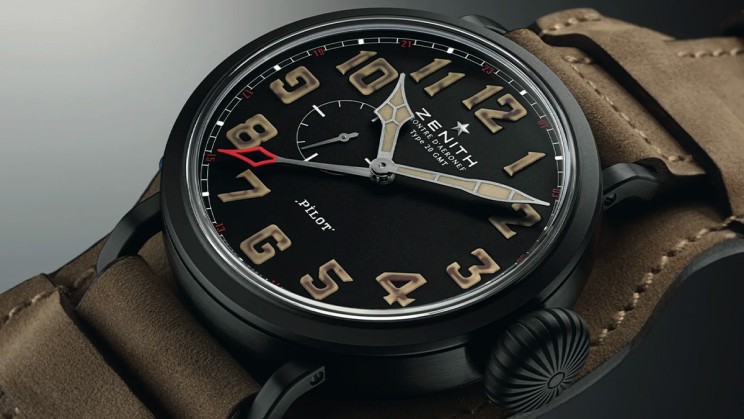
Zenith Pilot Type 20 GMT
Case: steel, solid caseback, water resistant to 100m
Dimensions: diameter: 48mm; thickness: 15.8mm
Movement: self-winding mechanical Elite 693 calibre; 28,800vph; 50-hour power reserve
Functions: hours, minutes, small seconds display, second time zone
Dial: black
Strap: leather
Launch year: 2013
This year, GMT Magazine and WorldTempus have embarked on an ambitious project: summarising GMT and Worldtimer watches since 2000 in The Millennium Watch Book - Travel Watches, a beautifully laid-out coffee table book. This article is an excerpt of the book. The Millennium Watch Book - Travel Watches is available for preorder in both French and English here.
